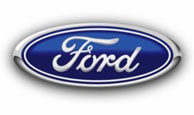Ford's new Fiesta is a classy global supermini
 Hamburg - A wind of change is blowing through the supermini segment and following hard on the heels of the new Mazda 2 and the Seat Ibiza is Ford's contribution, the revamped Fiesta, now in its seventh generation.
Hamburg - A wind of change is blowing through the supermini segment and following hard on the heels of the new Mazda 2 and the Seat Ibiza is Ford's contribution, the revamped Fiesta, now in its seventh generation.
The Blue Oval badly needs to win back customers in this market which it once dominated. After all, the Fiesta was the best-selling car in its class for a decade. The latest Fiesta is a truly global vehicle to be sold in dozens of markets around the world, from Asia to Eastern Europe.
The styling of the newcomer is faithful to the rakish Verve concept seen at the Frankfurt car show last year and much more distinctive than its predecessor. The Fiesta wears Ford's bold, corporate face, with a signature trapezoidal lower grille, chrome accents and long, sweeping headlamps. The sides feature bulging wheel arches and a distinct crease while the sweeping windscreen and roofline run down to a concave boot lid, framed by tall taillights.
Inside the cabin is dominated by a bold central console with slanted switches which seem to have been inspired by a cell phone. It houses the key controls for the radio and on-board information equipment. There is even a USB socket between the seats for a memory stick loaded with music tracks since in addition to the 750,000 existing Fiesta customers Ford is eager is appeal to young, first- time buyers more interested in recharging a mobile or listening to favourite MP3 than in top speed and torque.
Interior space is another strongpoint compared to the previous Fiesta incarnation even though the exterior dimensions have hardly changed. The car is still 3.95 metres long with a wheelbase of 2.49 metres yet seems roomier than ever before. The ergonomics remain good too, with more comfortable seats which are now also adjustable for height.
The boot has been boosted slightly and now holds 295 litres, making it one of the biggest in its class. Of course nothing is perfect and the interior of the Fiesta appears a little drab, depending on the colour combination chosen. The hard plastic door caps and cheap-looking headlining trim jar too.
The power units on offer might seem to be old friends but the weight of the four petrol variants, offering between 60 to 120 horsepower and the diesel option, has been pared down. This combines with the 40 kilos of weight saved over the last Fiesta incarnation to give more zippy performance. Manouevrability is aided by new, electrically-assisted steering.
The flagship 90-horsepower diesel tested here, the 1.6 TDCI, consumes a miserly 4.2 litres per 100 kilometres yet covers the 0 to 100 kilometres an hour dash under 12 seconds and has a top speed of 175 km/h. Mated to a five-speed gearbox this engine is flexible enough to take hilly terrain in its stride.
The chassis is optimal too and the Fiesta maintains the reputation of European Fords for agile handling. Prices have gone up slightly, but the well-equipped basic models make the car seem more of a bargain than the versions it succeeds. There is also more safety for the money too. The entire range has ESP as standard and there are at least five airbags, including one for the driver's knee.
Key data: Ford Fiesta 1.6 TDCI Engine layout: Four cylinder, turbocharged diesel, 1560 cc Max power: 90 bhp at 4,400 rpm Gearbox: Five-speed manual Suspension: MacPherson strut at front, twist beam at rear Drive: Front wheel Length: 3.950 mm Width: 1.973 mm Weight: 1.155 kg Acceleration 0-100 km/h: 11.9 secs Top speed: 175 km/h Average fuel consumption: 4.2 litres From 11,250 euros (Germany) (14,904 dollars. (dpa)